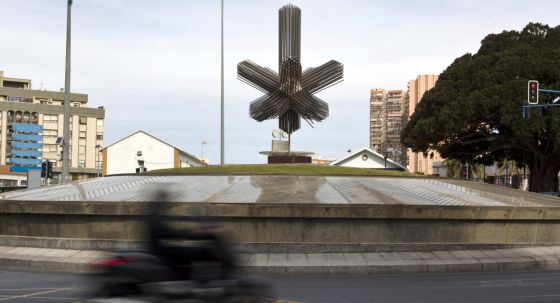
CORPORATE DOSSIER
NEWS
Posted on 2012-05-06
ALICANTE FOR CULTURAL TOUR

Monitor the city from its base, always located in prime spots to view and are mute witness of the passage of time, of people and fashions witnesses. But often we do not car enough for them. They are those urban sculptures, tributes to important people for the evolution of a city, historical moments or trades but also pure art outdoors. The Alicante architect Santiago Varela just released his book urban sculptures on the Alicante´s Walks, which has about 15 routes around the city from its most representative monuments.
The book arises from Plan E, the initiative of the Socialist government of José Luis Rodríguez Zapatero to boost public investment in the first tranche of the economic crisis. His edition was one of the improvements that included Urbana de Exteriores, who appear to the contest for the rehabilitation of various urban spaces, from sculptures to facades, which adjudicated the city of Alicante. Varela collects 60 sculptures found in public and in the cemetery, "where there is an interesting field of work in sculpture and architecture," he explains. The volume also includes sculptures that disappeared for different reasons and others that were planned but ultimately failed to materialize. This book is published in black and white "to highlight the strictly sculptural elements, avoiding the visual interference from the surrounding environment," explains the architect.
The project arose from an agreement of Plan E. Varela has focused the study of sculptures in a period from the mid-nineteenth century and reaching today. The architect stresses that samples are "the aspirations of the local bourgeoisie as to materialize symbols, aspirations and beautification of the city that was built during those decades."
When Varela is asked, he highlights three sculptures: the memorial to Quijano, located in the garden of the same name, being the oldest, the monumental sculpture of Vicente Bañuls Canalejas, the late nineteenth and early twentieth, and most recently Eusebio Sempere's sculpture at the intersection of avenue Oscar Esplá, Maisonnave and Salamanca, "very interesting that designed Sempere," emphasizes the author.
It is published in black and white to emphasise the sculptures. Throughout the pages, Varela provides tours through Alicante and has therefore first analyzed the characteristics of the corresponding urban environment. "In them by way of beads necklace, he described each sculpture, using a detailed description of its morphology, materials, symbols, etc.," explains the architect.





